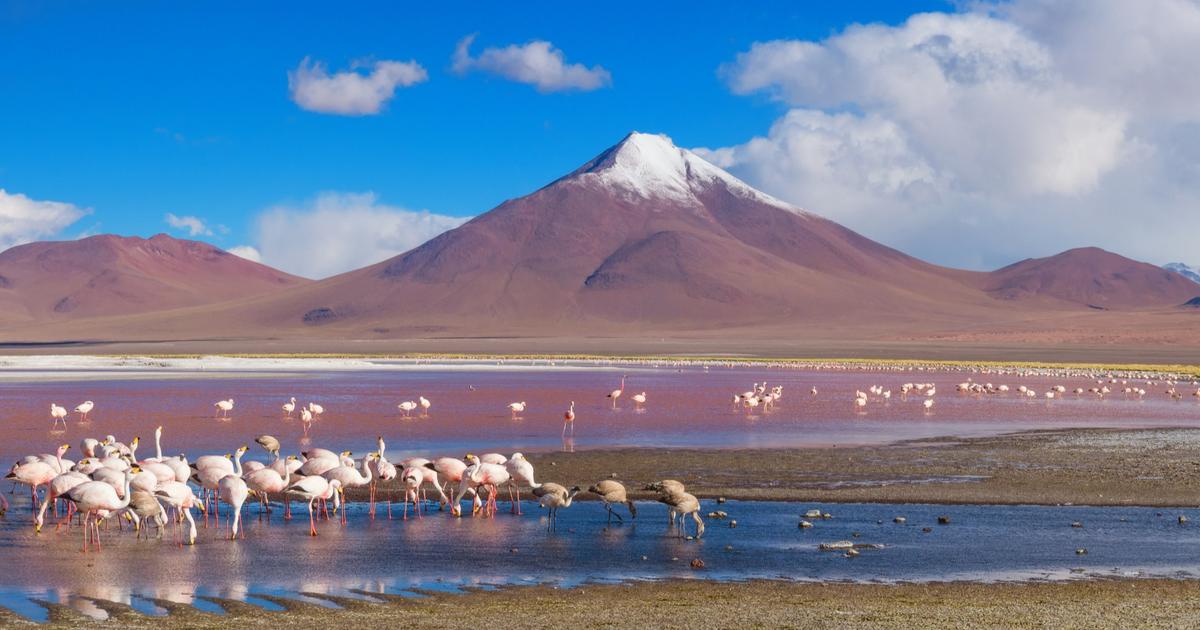Due to Bolivia's extremely diverse landscape, as well as its landlocked nature, it is possible to visit the country all year round.
However, there is a marked difference between the seasons.
Winter, dry but cool, extends from May to October.
The summer season, wetter and warmer, extends from November to April.
To discover
Galapagos partner cruise |
14 days |
earthly paradise
Read alsoThese trips that inspired them: Chile and Bolivia by editor Thomas Jonglez
When is the best time to go to La Paz and the Altiplano?
Perched at an altitude of 3,600 m and surrounded by mountains, La Paz is best discovered from April to October.
Jeff McCollough
La Paz is a city that could not be more impressive.
Perched 3,600 m above sea level and surrounded by mountains, it is best discovered from April to October, when the days are dry.
Nights can be cold, especially in June and July.
The La Paz cable car has several routes that take you away from the city center.
El Alto is a thriving center of Aymara culture.
Expect to see
cholas
, women in traditional dress, and striking buildings featuring colorful Aymara designs.
Just 10 km from town is the Valley of the Moon, a canyon that you can explore through a network of trails.
Hike between the mountains, lakes and valleys of the Cordillera Real, or hire a mountain bike to reach the lush countryside and waterfalls near the town of Corioco.
The wet season, from November to March, brings tougher conditions for trekking and cycling, with higher temperature and increased humidity.
Birthplace of the Inca sun god, Lake Titicaca has been attracting visitors for centuries.
Copacabana, the main town of the Titicaca region, has its share of restaurants and bars from where you can admire the view of the lake.
The Uros people have lived in the area since pre-Inca times on floating islands that they create using reeds that grow in the lake.
Step ashore and step back in time at Isla de Sol and Isla de la Luna, two fascinating Inca archaeological sites.
From Copacabana, you can take the trail leading to Cerro Calvario.
A vast white expanse during the dry season and the largest mirror in the world after the rain, the Salar de Uyuni is one of the most extreme landscapes on the planet.
Laguna Colorado and Laguna Verde, near the plains,
are red and green lakes, respectively colored by sediments and minerals.
Listed as UNESCO World Heritage Sites, Sucre and Potosi represent different aspects of Bolivia's history and development.
When is the best time to go to the Bolivian plains?
Amboro National Park is home to tropical rainforest concealing waterfalls, caves and mountains.
Josas
The region of the plains is best discovered from April to October, a period during which the rains are rare and the temperatures cool.
Santa Cruz de la Sierra is an endearing mix of old and new.
Narrow streets, horse-drawn carts and elegant colonial buildings rub shoulders with skyscrapers and shopping malls.
Stroll through Plaza 24 de Septiembre, stroll through Parque el Arenal and explore the city's botanical gardens.
Amboro National Park is home to tropical rainforest concealing waterfalls, caves and mountains.
Here you can go hiking, horseback riding, kayaking and rafting.
You can also spot monkeys, sloths, spectacled bears, armadillos and a host of birds including macaws,
Read alsoBolivia: five ways to make the most of a stopover in Santa Cruz
When is the best time to go to the Bolivian Amazon?
The Bolivian Amazon includes plains, mountains as well as tropical forests.
Matyas Rehak
Hot and humid throughout the year, the Amazon has average temperatures of between 25°C and 30°C.
The dry season, from May to October, sees fewer mosquitoes and more accessible wildlife.
The Bolivian Amazon includes floodplains, mountains and cloud forests as well as rainforests and a wide variety of animals and birds including capybaras, tapirs, several species of monkeys, caimans, parrots , macaws and toucans.
The lucky ones may even spot a jaguar in Madidi National Park.

